| Data & Tools | Publications | Training |
What is it?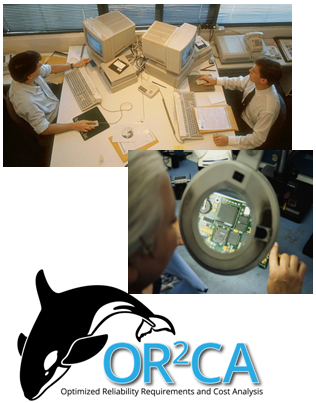
A Test and Simulation strategy involves defining the “right” mix of each to ensure a design/process is optimized and is meeting both its internal and customer requirements. An appropriate strategy minimizes test risk, is based on accurate simulation of the operational environment, and cost-effectively applies available resources.
What’s the payoff?
Testing can be very expensive. It ties up facilities, production assets, personnel and takes time. Proactive Design for Reliability test/simulation activities and appropriate tailoring of reliability test objectives (growth, compliance and screening) can minimize test costs and optimize overall test/simulation efficiency and effectiveness.
How can we help?
- Help you define the right strategy for test and simulation that will conserve organization resources
- Determine the appropriate environmental stresses and customer usage profiles to optimize your test and simulation results
- Implement techniques to conserve your organization’s resources, such as Bayesian analysis and accelerated testing
- Develop and implement an integrated reliability growth planning and tracking process, beginning early in product design and development, using appropriate Duane, AMSAA, or other models
- Develop test documentation in the form of plans and/or procedures, as well as test selection and planning strategy guides
Related Data & Tools:
 QuART PROThe QuART software series represents the fourth generation of the highly popular "Reliability Toolkit" series of RMQ engineering aids originated in 1988 by Quanterion personnel while working at the Rome Laboratory (formerly Rome Air Development Center).
QuART PROThe QuART software series represents the fourth generation of the highly popular "Reliability Toolkit" series of RMQ engineering aids originated in 1988 by Quanterion personnel while working at the Rome Laboratory (formerly Rome Air Development Center). QuART ER (Enhancing Reliability)This 2011 release features over 2 dozen new or improved tools over QuART PRO. QuART ER updates more than 10 tools and adds more than 15 new tools to the tool set available in QuART PRO, including the "Ask a Quanterion Expert" function that allows users to direct their reliability questions to an ASQ certified reliability expert at Quanterion.
QuART ER (Enhancing Reliability)This 2011 release features over 2 dozen new or improved tools over QuART PRO. QuART ER updates more than 10 tools and adds more than 15 new tools to the tool set available in QuART PRO, including the "Ask a Quanterion Expert" function that allows users to direct their reliability questions to an ASQ certified reliability expert at Quanterion.
Related Publications:
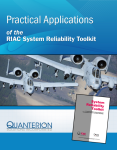 Practical Applications of the RIAC System Reliability ToolkitThe purpose of this publication is to provide illustrative examples of the more common mathematical calculations and statistical techniques utilized by reliability engineers in the practical performance of their daily activities. It is intended to be used as a companion to the RIAC “System Reliability Toolkit”, as the foundations of all of the techniques illustrated in this publication are discussed therein.
Practical Applications of the RIAC System Reliability ToolkitThe purpose of this publication is to provide illustrative examples of the more common mathematical calculations and statistical techniques utilized by reliability engineers in the practical performance of their daily activities. It is intended to be used as a companion to the RIAC “System Reliability Toolkit”, as the foundations of all of the techniques illustrated in this publication are discussed therein.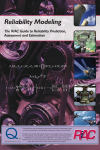 Reliability Modeling – The RIAC Guide to Reliability Prediction, Assessment and EstimationThe intent of this book is to provide guidance on modeling techniques that can be used to quantify the reliability of a product or system. In this context, reliability modeling is the process of constructing a mathematical model that is used to estimate the reliability characteristics of a product.
Reliability Modeling – The RIAC Guide to Reliability Prediction, Assessment and EstimationThe intent of this book is to provide guidance on modeling techniques that can be used to quantify the reliability of a product or system. In this context, reliability modeling is the process of constructing a mathematical model that is used to estimate the reliability characteristics of a product.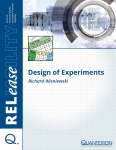 Design of ExperimentsExperiments are designed and executed in order to illuminate our understanding about a product or process. Characteristics of products and processes are frequently affected by various factors. In an experiment, one or more process variables (or factors) are changed in order to observe the effect the changes have on one or more response variables. Classical experiments focus on varying one factor at a time (0FAT or 1FAT), perhaps at one or two levels, and attempt to hold everything else constant.
Design of ExperimentsExperiments are designed and executed in order to illuminate our understanding about a product or process. Characteristics of products and processes are frequently affected by various factors. In an experiment, one or more process variables (or factors) are changed in order to observe the effect the changes have on one or more response variables. Classical experiments focus on varying one factor at a time (0FAT or 1FAT), perhaps at one or two levels, and attempt to hold everything else constant.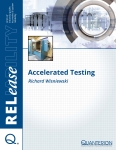 Accelerated TestingThe length of time required to perform certain reliability tests can be prohibitive. Tests performed to improve a product through the elimination of design defects or to estimate its design life are dependent upon the rate at which failures are precipitated and corrected. Through the application of increased electrical, mechanical and thermal stresses, cycling frequency or operational duty cycles, damage can be accumulated more quickly. This damage accumulation then leads to failure precipitation. If the magnitude of the increase in stress is known and controlled, various models can be used to quantify the acceleration.
Accelerated TestingThe length of time required to perform certain reliability tests can be prohibitive. Tests performed to improve a product through the elimination of design defects or to estimate its design life are dependent upon the rate at which failures are precipitated and corrected. Through the application of increased electrical, mechanical and thermal stresses, cycling frequency or operational duty cycles, damage can be accumulated more quickly. This damage accumulation then leads to failure precipitation. If the magnitude of the increase in stress is known and controlled, various models can be used to quantify the acceleration.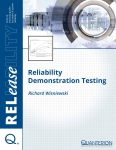 Reliability Demonstration TestingThere are many forms of reliability testing that may be applied at the component, assembly, product, equipment and/or system level. Some are intended to find design problems so that they can be fixed (accelerated tests; test, analyze and fix (TAAF) or reliability growth testing (RGT)). Others are intended to find manufacturing defects and repair them prior to shipping the item (environmental stress screening (ESS) or highly accelerated stress screening (HASS)). Reliability demonstration/qualification tests are a subset of a larger group, collectively known as compliance tests.
Reliability Demonstration TestingThere are many forms of reliability testing that may be applied at the component, assembly, product, equipment and/or system level. Some are intended to find design problems so that they can be fixed (accelerated tests; test, analyze and fix (TAAF) or reliability growth testing (RGT)). Others are intended to find manufacturing defects and repair them prior to shipping the item (environmental stress screening (ESS) or highly accelerated stress screening (HASS)). Reliability demonstration/qualification tests are a subset of a larger group, collectively known as compliance tests.
 Lunchtime Learning SeriesThe “Lunchtime Learning” series is a group of short course tutorials are aimed at providing a basic introduction to a variety of topics in which our community members have expressed an interest.
Lunchtime Learning SeriesThe “Lunchtime Learning” series is a group of short course tutorials are aimed at providing a basic introduction to a variety of topics in which our community members have expressed an interest. Environmental Stress Screening: Basic Steps in Choosing an ESS ProfileEnvironmental Stress Screening (ESS) is the process of exposing a newly manufactured product to environmental stresses in order to identify and eliminate latent defects introduced during the manufacturing process. It is part of the manufacturing process and is therefore performed on 100% of the items manufactured.
Environmental Stress Screening: Basic Steps in Choosing an ESS ProfileEnvironmental Stress Screening (ESS) is the process of exposing a newly manufactured product to environmental stresses in order to identify and eliminate latent defects introduced during the manufacturing process. It is part of the manufacturing process and is therefore performed on 100% of the items manufactured. Design of Experiments for Reliability ImprovementMany times we want to improve Reliability (or other Quality characteristics) by way of increasing positive and reducing negative factor effects that influence performance.
Design of Experiments for Reliability ImprovementMany times we want to improve Reliability (or other Quality characteristics) by way of increasing positive and reducing negative factor effects that influence performance.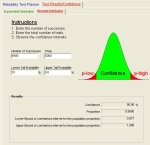 Test Samples: How Many Are Needed?For demonstrating product reliability the question of how many test samples are needed to be “X” percent confident of having met a reliability objective often comes up. Let’s say that manufacturer is going to produce 5,000 rooftop car carriers and is willing to tolerate roughly 100 returns over the next five years. How can this… Read More
Test Samples: How Many Are Needed?For demonstrating product reliability the question of how many test samples are needed to be “X” percent confident of having met a reliability objective often comes up. Let’s say that manufacturer is going to produce 5,000 rooftop car carriers and is willing to tolerate roughly 100 returns over the next five years. How can this… Read More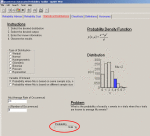 Probability and Statistics for Reliability: An IntroductionPainful as it is to many of us, the generally desirable product characteristicReliability is heavily dependent on Probability and Statistics for measuring and describing its characteristics. This edition of Reliability Ques will only be the tip of the iceberg in this regard. Let’s start with a few basics:
Probability and Statistics for Reliability: An IntroductionPainful as it is to many of us, the generally desirable product characteristicReliability is heavily dependent on Probability and Statistics for measuring and describing its characteristics. This edition of Reliability Ques will only be the tip of the iceberg in this regard. Let’s start with a few basics: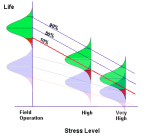 Using Accelerated Life Testing to Assess Warranty RiskDuring a recent project, a question arose about the feasibility of providing a ten year warranty for a new system. The system consisted of a proven electronic assembly and 40 newly designed hybrid electronic modules. Warranty costs could be significant if reliability risks were not fully understood. The company producing the system
Using Accelerated Life Testing to Assess Warranty RiskDuring a recent project, a question arose about the feasibility of providing a ten year warranty for a new system. The system consisted of a proven electronic assembly and 40 newly designed hybrid electronic modules. Warranty costs could be significant if reliability risks were not fully understood. The company producing the system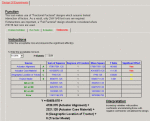 Which Variables Are Critical to Field Reliability? Design of Experiments (DOE) Can Help Optimize Your DesignEngineers are often faced with the problem of optimizing a process that includes a number of input variables. It could be an analysis of a manufacturing process, or even an analysis of a business process. They’re often challenged to find ways to reduce
Which Variables Are Critical to Field Reliability? Design of Experiments (DOE) Can Help Optimize Your DesignEngineers are often faced with the problem of optimizing a process that includes a number of input variables. It could be an analysis of a manufacturing process, or even an analysis of a business process. They’re often challenged to find ways to reduce

